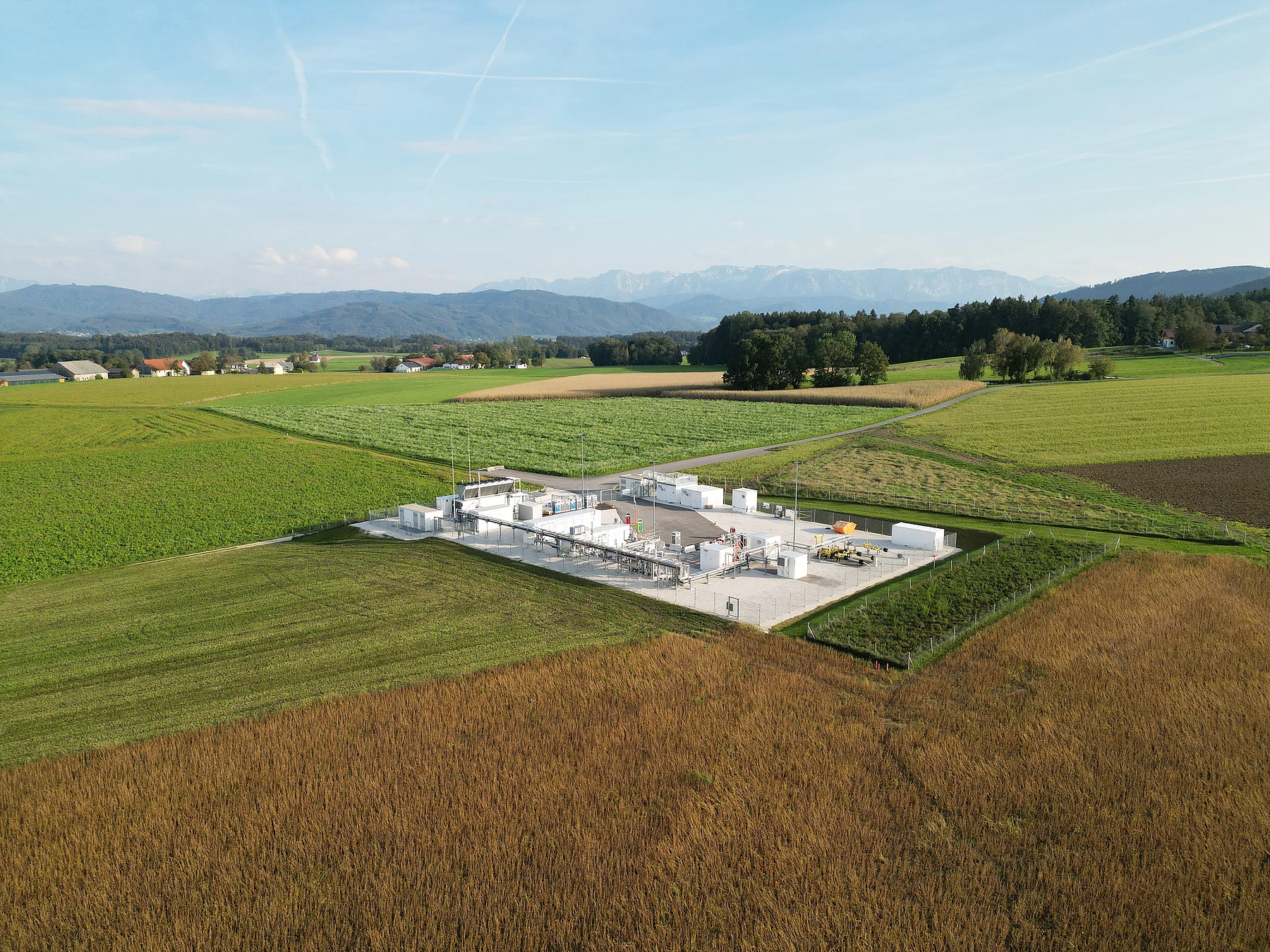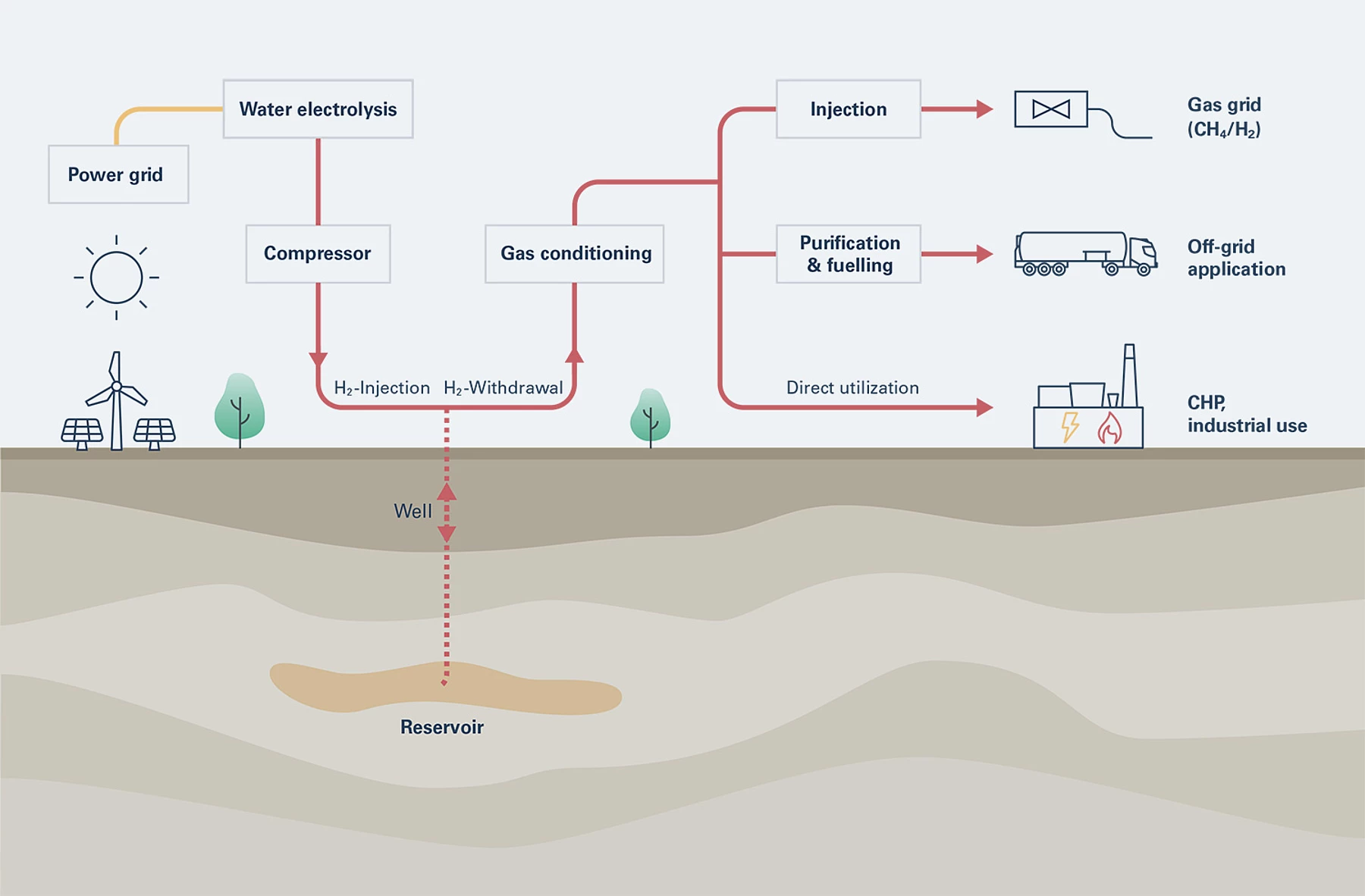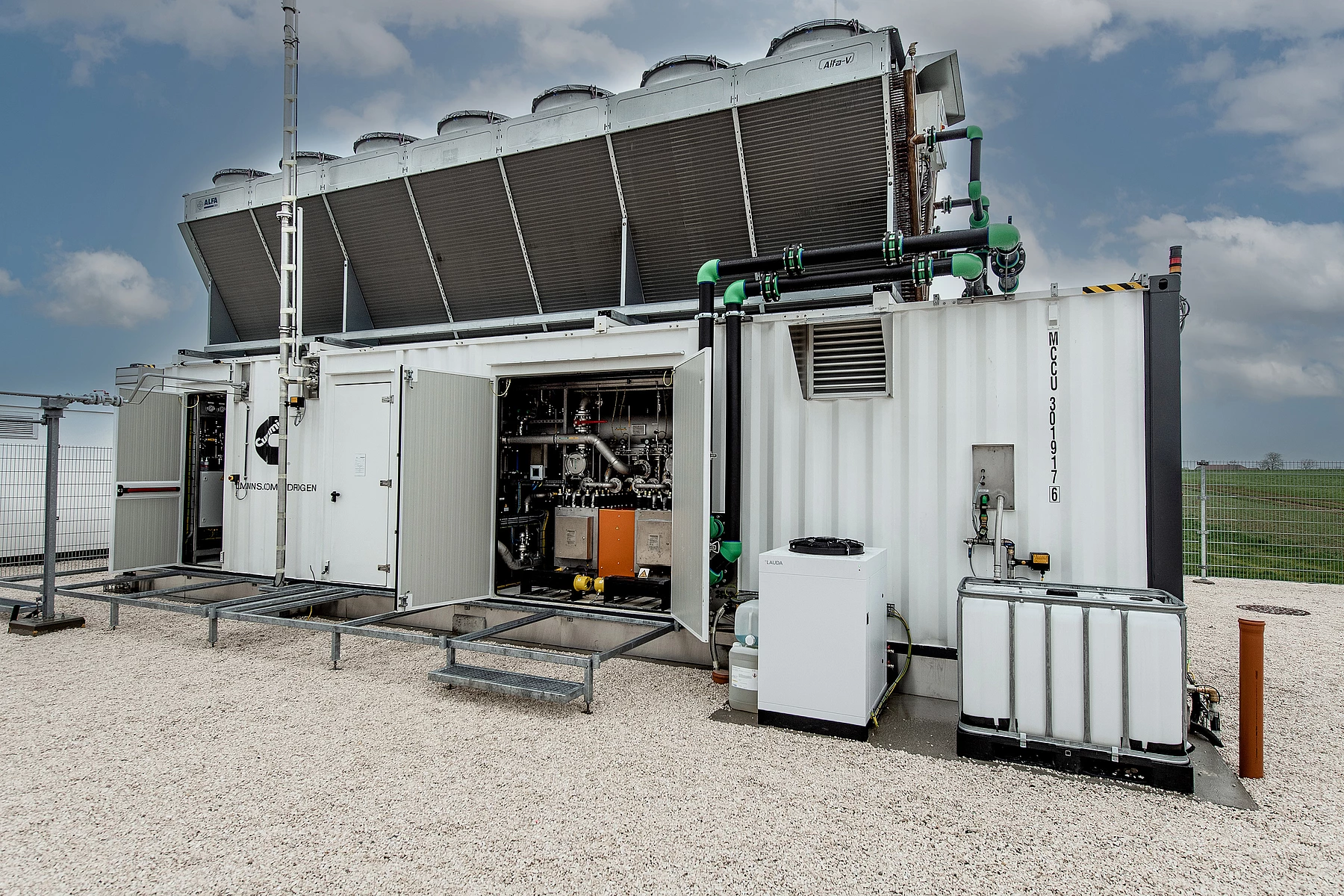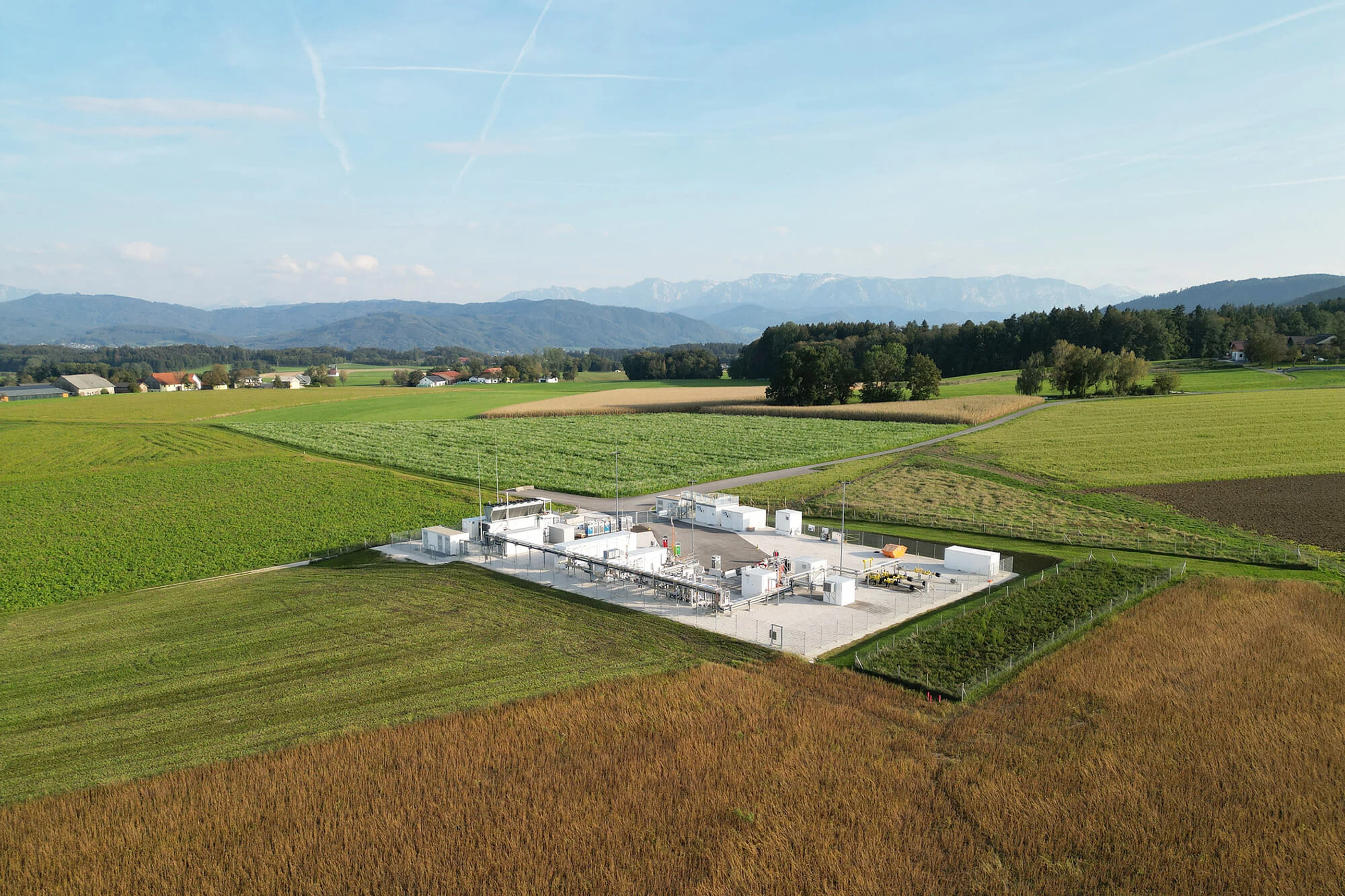Store solar energy seasonally and on large scale in the form of hydrogen, use existing infrastructure – for a secure renewable energy landscape
In the lighthouse project "Underground Sun Storage 2030" (USS 2030), the safe, seasonal and large-scale storage of renewable energy in the form of hydrogen in underground gas reservoirs was developed. In addition, all partners involved in the project could jointly gain valuable technical and economic knowledge for the development of a secure hydrogen supply.
In this demonstration project, the only one of its kind in the world, renewable solar energy was converted into green hydrogen in a climate-neutral way by means of electrolysis and stored in a pure form in former natural gas reservoirs.
 ©
©
Tests under real conditions
Until 2025, interdisciplinary technical-scientific investigations for the energy future were carried out under real conditions at an undergroundgas reservoir in the municipality of Gampern (Upper Austria) under the leadership of RAG Austria AG together with the project partners – Axiom Angewandte Prozesstechnik GmbH, Energie AG Oberösterreich, Energieinstitut an der Johannes-Kepler-Universität Linz, EVN AG, HyCentA Research GmbH, K1-MET GmbH, Vienna University of Technology, University of Natural Resources and Life Sciences, VERBUND, Verein WIVA P&G and voestalpine Stahl GmbH. A customised demonstration facility was built for this purpose. These investigations were complemented by the development of suitable processing technologies, the modelling of future energy scenarios and techno-economic analyses.
The project was funded within the framework of the RTI initiative "Vorzeigeregion Energie" of the Climate and Energy Fund, endowed with funds from the Ministry of Climate Protection (BMK). "USS 2030" was successfully submitted within the framework of the "WIVA P&G" showcase energy region.

Hydrogen can be stored in natural gas reservoirs
The predecessor projects "Underground Sun Storage" and "Underground Sun Conversion" have already demonstrated that a hydrogen content of up to 20% can be stored in natural gas reservoirs in a well-tolerated manner. Laboratory tests suggested that the hydrogen content can also be increased to 100%.
The results of the "Underground Sun Storage 2030" project confirmed the feasibility of 100% hydrogen storage in underground porous reservoirs. The technology and RAG Austria are now ready for further upscaling.
Together with renowned partners from industry and the Austrian research community, the project also investigated other aspects related to stored hydrogen. This included, for example:
- Hydrogen as a substitute for fossil natural gas
- Direct use in energy-intensive industry
- Processing and utilisation of hydrogen with high purity
"Hydrogen is the missing piece of the puzzle for a completely CO₂-neutral energy system: it can be produced in a climate-neutral way, used directly in industry, produce environmentally friendly heat and electricity, and represent a fuel of the future. But the decisive factor is its large-scale storage and transportability in the existing almost invisible gas infrastructure. Only in this way will we have sufficient and, above all, demand-oriented green energy available even in times of low sun and low wind."
Hydrogen is indispensable for energy transition – bringing summer sun into winter
In order to be able to achieve the climate targets and a significant reduction in CO2, reductions are needed in the entire energy sector. In addition, affordability and security of supply must be maintained. Without gaseous energy carriers and the associated storage capacities, the energy transition is not possible. Modelling of the future overall energy system shows that in Central Europe in particular there will be a large surplus of renewable energy in the summer months due to the expansion of renewable electricity generation.
On the other hand, there will be a massive power shortfall in the winter months due to the lower solar radiation and the low water flow on the one hand and the significantly higher energy demand on the other. In Austria, we therefore see an increased divergence between electricity supply and demand, both selectively and seasonally. The transmission system operator APG assumes a seasonal shift requirement of 10 TWh/a (terawatt hours per year) for 2030. Project manager RAG Stephan Bauer: "The challenge of a secure power supply in winter becomes even more obvious as the electrification of the heating sector increases."
It can be assumed that this power shortfall cannot always be easily covered by imports, as Austria's neighbouring countries are facing similar challenges. Energy must therefore be stored in large quantities (on the scale of several TWh) in summer so that sufficient green energy is available for electricity, heat and mobility in winter. Storable gaseous energy carriers, such as hydrogen, are an outstandingly suitable technology for covering this annual storage demand.
For a rapid and realistic conversion to a climate-neutral energy supply, it is therefore necessary to convert surplus solar and wind power into gaseous energy carriers such as hydrogen that can be stored in large volumes and seasonally.
 ©
©
Aiming to build a secure hydrogen economy
The worldwide unique project “Underground Sun Storage 2030” provided valuable insights into the seasonal storability of renewable energy in the form of hydrogen, due to its large volume field test. These investigations will now be continued in the follow-up project EUH2STARS to support the upscaling of this storage technology as well as the further utilization of hydrogen. Both projects are part of “WIVA Power & Gas” and an important step for the development of a secure hydrogen economy.
“The challenge of a secure power supply in winter becomes even more obvious as the electrification of the heating sector increases.“

